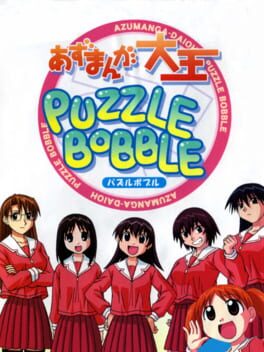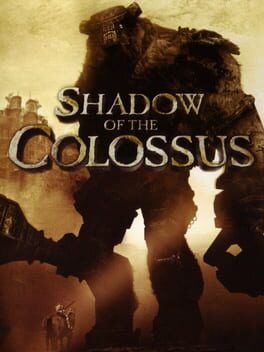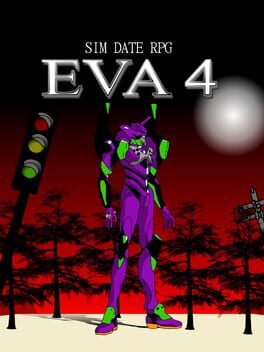Local_Winner
Bio
i am legend
i am legend
Badges

GOTY '23
Participated in the 2023 Game of the Year Event

Donor
Liked 50+ reviews / lists

Liked
Gained 10+ total review likes

Best Friends
Become mutual friends with at least 3 others

GOTY '22
Participated in the 2022 Game of the Year Event

2 Years of Service
Being part of the Backloggd community for 2 years

Gamer
Played 250+ games

GOTY '21
Participated in the 2021 Game of the Year Event

Noticed
Gained 3+ followers

N00b
Played 100+ games
Favorite Games
361
Total Games Played
000
Played in 2024
010
Games Backloggd
Recently Reviewed See More
I was a tiny wain when this first emerged onto the internet and now I am a big large oaf who has become inextricably drawn to it. Why are videogame preservationists wasting their time on Atari 2600 shovelware when this, the most culturally impactful game of the early 2000s, is left to the turning of the tides?
Many of the reviews praising this game have outlined it's remarkably unique and stylish aesthetics, so let's instead discuss the competitive integrity and value of Tekken 4 from a meta game perspective.
Typically, my fighting game reviews only explore the nitty gritty of the competitive metagame when I have reason to believe there are systems within the game that prevent it from allowing dynamic and nuanced competition. Those who know me would likely assume that Tekken 4 has a meta that's not particularly to my taste, with system mechanics that put aggression to the forefront and that neuter one of my favourite aspects of the series: it's movement. To my surprise, T4 has a lot going for it competitively and the assessment that the game is defined purely by jab into jab vs jab into sidestep undercuts what we actually observed during its competitive heyday. I'd like to get into some detailed specifics of things I really like that are unique to T4 and only T4, so let's get into it.
Let us start with the cast of T4, specifically let's look at the big three who defined the metagame in an almost rock, paper, scissors style. Jin had the best matchup spread in the game with an all-rounder type tool kit that afforded him everything except movement. Steve was an aggressive anti-meta but still meta option. His great matchup against Jin allowed his less strong matchups elsewhere to not matter as much because so many competitors were naturally drawn to Jin. Nina completely shuts down Steve's options, but doesn't have as strong a matchup with Jin. She's the only character in the game with good backwards movement thanks to Hayashida step and this level of evasion gives her the ability to play as a defensive character who can transition to offense with lockdown from her ivory cutter. Yes, these three define a not completely solvable meta state that, to me, is genius. Now with any metagame, it's not perfect. People will tend to skew towards whatever has the most consistency and the game's mechanics are a large part in determining that. Due to this, much like in every other game, there is still a hierarchical order and the values of rock, paper and scissors respectively are not perfectly equal. That being said, there are more characters beyond the top three, and what's nice about T4 is there is practically no character who feels redundant in their inclusion.
Xiaoyu, Paul, Heihachi, the almost entirely overhauled Kazuya, Marduk. Not only does every character in T4 play pretty wildly different, they all play almost entirely different from their entries in other Tekken titles. I've seen many T4 analyses where some broad comparisons to the original Tekken Tag Tournament have been made that fail to understand that "different" is not necessarily "bad".
A common criticism is that whiff punishment is practically absent in T4. Not only does this statement on a surface level seem a disservice, assessing match footage reveals its not even true. Creating space is certainly not as safe or as easy as it was in TTT and while this does make the game more offensive overall, it also means that characters do not rely on the same hit and run strategies of the past, in which many characters would not opt to be proactive in neutral, as it was too high risk. Kazuya, while stripped of much of his defensive presence, is granted highly rewarding counter hit options in the form of his df2 and new EWGF. He still plays the spacing game and can turtle, but he must adapt to close in when he can afford to press his advantage. I'm not trying to argue T4 has more depth in the ebb and flow of character gameplans than TTT, simply that it is very different and while the meta is rather centralized in both games, I feel that there's more variety at the highest level of play from T4 whereas in TTT, as much as I love it, is really only super fascinating at a high level if you like watching lots of risk mitigation and capitalising on opponent's mistakes.
So then, we know that T4 has variety, but what makes that variety actually good and not just a large selection of differing but boring options?
Let's start with a universal change that deepend the game. The 1 break wallpush being so difficult to break and most other throws being easier than TTT creates exceptional mind games at the wall. The low risk option, which also happens to be quite rewarding for a good chunk of characters, is to wallpush at the wall. This means that players are more prepared to break 1 throws at the wall and they have to be very quick about it given the tiny window wallpush has. With this in mind, they aren't likely going to be expecting your 2 and 1+2 throws near the wall, which creates exceptional mindgames for a lot of the cast. Characters like Nina with super damaging multithrows thrive off of this type of conditioning. It is legitimately my favourite throw system in the entire series. Throws have always been an aspect of Tekken I have found needs some refinement and it's a shame they stepped away from this system because it really is near perfect.
There are some moves that people consider "broken" that actually open up the meta to new options rather than solved gamestates, as the moniker "broken" would imply. For example, Jin's just frame laser scraper unblockable.
When getting hit by the string, some characters can use a hopkick to make themselves airborne so it won't connect properly, stopping the opponent from getting a proper launch. The decision making here depends on if you believe your opponent is good enough to hit the unblockable. You can side step and get a punish if they're too slow or block the third hit if they're too fast but if you go for a hopkick to mitigate the damage from the just frame and they don't land it, you'll be getting hit when it could have been your opportunity to go on the offensive. Much like parry baiting in 3rd Strike, there's a level of skill checking at play. Of course, at the highest level this wouldn't happen, right? Match footage from SBO 2004 showed numerous Jin's missing their unblockable and in response? Not many hopkick escapes. TomHilfiger vs Jr.Lime? TomHilfiger goes for hopkicks even though Jr.Lime misses some unblockables because he knows when it's too risky to let the unblockable connect.
We must now address the elephant in the room: wall touch of deaths. "The horror!" I hear you wail. "Infinites and ToDs are just unacceptable!" Surely no competitive game can have something like that! Oh wait, MvC2, UMvC3, 3rd strike, Alpha 3, Tekken 5, Tekken 7, etc, etc, etc. Now I'm being hyperbolic to illustrate a point, but let's look more closely at the wall ToDs in T4 before we jump to conclusions. Depending on the era of T4 you watch, certain rules were in effect regarding what stages were tournament legal. While lots of characters can get huge unscaled damage in the corners of some stages, there's not a huge amount of footage of this occuring in tournaments where said stages were legal. Perhaps it was because competitors knew that playing too passively and allowing themselves to be pushed to the wall or corner would result in their death and so, they used the strengths of pokes or evasion when the opponent's offense became too predictable to keep the opponent from continuosly pushing them back. The only character who's gameplan actually revolves around going for a ToD is Lee, because of his infinite wall combo on the arena stage, which was a go to for events that wanted to limit what stages were allowed. This makes his gameplan similar to that of Makoto's touch of stun strategy with SA2 in 3rd Strike. Lee has to struggle for positioning and condition the opponent to do what he wants so he can finish out the round. Might I remind the reader that additionally, a game of Tekken is a best of 5 rounds. If these ToDs were so present and game disrupting that they destroyed all competitive integrity, surely there would be tournament footage of these ToDs occuring numerous rounds and closing out numerous games in a high level top 16. I urge those who believe the wall ToDs ruin this game to find such footage. I'd love to see it.
To me, T4 and TTT are a superb pairing. What T4 lacks TTT has, and what TTT lacks T4 has. They compliment each other with their differences and it's what made their pairing together during the early 2000's competitive Tekken events so flavourful and diverse.
Many small decisions impacted the game in truly meaningful ways not directly observable. I highly encourage those that are interested in T4 to watch old Tougeki and Evolution footage, as I believe much of it illustrates many of the positions I have argued throughout this review. Additionally, the TomHilfiger vs. Jr.Lime replay commentated by Aris can give context to what competitive Tekken was like back then. I envy an era where competition happened purely for the love of the game, when there was no money, when play occured because the games were good and communities wanted to support games for being good.
Typically, my fighting game reviews only explore the nitty gritty of the competitive metagame when I have reason to believe there are systems within the game that prevent it from allowing dynamic and nuanced competition. Those who know me would likely assume that Tekken 4 has a meta that's not particularly to my taste, with system mechanics that put aggression to the forefront and that neuter one of my favourite aspects of the series: it's movement. To my surprise, T4 has a lot going for it competitively and the assessment that the game is defined purely by jab into jab vs jab into sidestep undercuts what we actually observed during its competitive heyday. I'd like to get into some detailed specifics of things I really like that are unique to T4 and only T4, so let's get into it.
Let us start with the cast of T4, specifically let's look at the big three who defined the metagame in an almost rock, paper, scissors style. Jin had the best matchup spread in the game with an all-rounder type tool kit that afforded him everything except movement. Steve was an aggressive anti-meta but still meta option. His great matchup against Jin allowed his less strong matchups elsewhere to not matter as much because so many competitors were naturally drawn to Jin. Nina completely shuts down Steve's options, but doesn't have as strong a matchup with Jin. She's the only character in the game with good backwards movement thanks to Hayashida step and this level of evasion gives her the ability to play as a defensive character who can transition to offense with lockdown from her ivory cutter. Yes, these three define a not completely solvable meta state that, to me, is genius. Now with any metagame, it's not perfect. People will tend to skew towards whatever has the most consistency and the game's mechanics are a large part in determining that. Due to this, much like in every other game, there is still a hierarchical order and the values of rock, paper and scissors respectively are not perfectly equal. That being said, there are more characters beyond the top three, and what's nice about T4 is there is practically no character who feels redundant in their inclusion.
Xiaoyu, Paul, Heihachi, the almost entirely overhauled Kazuya, Marduk. Not only does every character in T4 play pretty wildly different, they all play almost entirely different from their entries in other Tekken titles. I've seen many T4 analyses where some broad comparisons to the original Tekken Tag Tournament have been made that fail to understand that "different" is not necessarily "bad".
A common criticism is that whiff punishment is practically absent in T4. Not only does this statement on a surface level seem a disservice, assessing match footage reveals its not even true. Creating space is certainly not as safe or as easy as it was in TTT and while this does make the game more offensive overall, it also means that characters do not rely on the same hit and run strategies of the past, in which many characters would not opt to be proactive in neutral, as it was too high risk. Kazuya, while stripped of much of his defensive presence, is granted highly rewarding counter hit options in the form of his df2 and new EWGF. He still plays the spacing game and can turtle, but he must adapt to close in when he can afford to press his advantage. I'm not trying to argue T4 has more depth in the ebb and flow of character gameplans than TTT, simply that it is very different and while the meta is rather centralized in both games, I feel that there's more variety at the highest level of play from T4 whereas in TTT, as much as I love it, is really only super fascinating at a high level if you like watching lots of risk mitigation and capitalising on opponent's mistakes.
So then, we know that T4 has variety, but what makes that variety actually good and not just a large selection of differing but boring options?
Let's start with a universal change that deepend the game. The 1 break wallpush being so difficult to break and most other throws being easier than TTT creates exceptional mind games at the wall. The low risk option, which also happens to be quite rewarding for a good chunk of characters, is to wallpush at the wall. This means that players are more prepared to break 1 throws at the wall and they have to be very quick about it given the tiny window wallpush has. With this in mind, they aren't likely going to be expecting your 2 and 1+2 throws near the wall, which creates exceptional mindgames for a lot of the cast. Characters like Nina with super damaging multithrows thrive off of this type of conditioning. It is legitimately my favourite throw system in the entire series. Throws have always been an aspect of Tekken I have found needs some refinement and it's a shame they stepped away from this system because it really is near perfect.
There are some moves that people consider "broken" that actually open up the meta to new options rather than solved gamestates, as the moniker "broken" would imply. For example, Jin's just frame laser scraper unblockable.
When getting hit by the string, some characters can use a hopkick to make themselves airborne so it won't connect properly, stopping the opponent from getting a proper launch. The decision making here depends on if you believe your opponent is good enough to hit the unblockable. You can side step and get a punish if they're too slow or block the third hit if they're too fast but if you go for a hopkick to mitigate the damage from the just frame and they don't land it, you'll be getting hit when it could have been your opportunity to go on the offensive. Much like parry baiting in 3rd Strike, there's a level of skill checking at play. Of course, at the highest level this wouldn't happen, right? Match footage from SBO 2004 showed numerous Jin's missing their unblockable and in response? Not many hopkick escapes. TomHilfiger vs Jr.Lime? TomHilfiger goes for hopkicks even though Jr.Lime misses some unblockables because he knows when it's too risky to let the unblockable connect.
We must now address the elephant in the room: wall touch of deaths. "The horror!" I hear you wail. "Infinites and ToDs are just unacceptable!" Surely no competitive game can have something like that! Oh wait, MvC2, UMvC3, 3rd strike, Alpha 3, Tekken 5, Tekken 7, etc, etc, etc. Now I'm being hyperbolic to illustrate a point, but let's look more closely at the wall ToDs in T4 before we jump to conclusions. Depending on the era of T4 you watch, certain rules were in effect regarding what stages were tournament legal. While lots of characters can get huge unscaled damage in the corners of some stages, there's not a huge amount of footage of this occuring in tournaments where said stages were legal. Perhaps it was because competitors knew that playing too passively and allowing themselves to be pushed to the wall or corner would result in their death and so, they used the strengths of pokes or evasion when the opponent's offense became too predictable to keep the opponent from continuosly pushing them back. The only character who's gameplan actually revolves around going for a ToD is Lee, because of his infinite wall combo on the arena stage, which was a go to for events that wanted to limit what stages were allowed. This makes his gameplan similar to that of Makoto's touch of stun strategy with SA2 in 3rd Strike. Lee has to struggle for positioning and condition the opponent to do what he wants so he can finish out the round. Might I remind the reader that additionally, a game of Tekken is a best of 5 rounds. If these ToDs were so present and game disrupting that they destroyed all competitive integrity, surely there would be tournament footage of these ToDs occuring numerous rounds and closing out numerous games in a high level top 16. I urge those who believe the wall ToDs ruin this game to find such footage. I'd love to see it.
To me, T4 and TTT are a superb pairing. What T4 lacks TTT has, and what TTT lacks T4 has. They compliment each other with their differences and it's what made their pairing together during the early 2000's competitive Tekken events so flavourful and diverse.
Many small decisions impacted the game in truly meaningful ways not directly observable. I highly encourage those that are interested in T4 to watch old Tougeki and Evolution footage, as I believe much of it illustrates many of the positions I have argued throughout this review. Additionally, the TomHilfiger vs. Jr.Lime replay commentated by Aris can give context to what competitive Tekken was like back then. I envy an era where competition happened purely for the love of the game, when there was no money, when play occured because the games were good and communities wanted to support games for being good.







